Pulque infused with guava. Mead brewed with the bark of the balche tree. Tesgüino macerated with usnea and stevia. For millenia, people have made creative use of the botanical bounty of the land we now call Mexico. In terms of plantlife, Mexico is the fourth most biodiverse country in the world. These botanical riches are spun into herbal remedies, savory sauces, spiced chocolate, and, naturally, alcohol.
In the days before distillation, brewers made wine and beer from fermented plants and fruit, sometimes infusing these drinks with bark, seeds, or cacti. Through trial and error, they’d learned that adding these botanicals could aid fermentation, moderate bacteria, sweeten the brew, change the flavor and aroma, or even fortify the alcohol with hallucinogens or stimulants.
As distilling technology spread across the land in the 18th century, residents naturally began to adapt their medicinal and culinary traditions to an exciting new medium: liquor. Using aguardiente de caña (cane distillate) or mezcal as a base, they macerated hard brown sugar with fruit and herbs, creating concoctions that ranged from medicinal to purely delightful.
Their legacy lives on. Today, Mexico is incredibly rich in liqueur traditions. You’ll see the brightly colored bottles at roadside stands: pink, yellow, green, gold. Plum, guava, pistachio, tamarind. Every region has at least one traditional liqueur, but typically you’ll find a rainbow of options representing evolving traditions and ongoing creativity.
In her excellent deep dive on Mexican rum and rum-based liqueurs, Leigh Thelmadatter writes, “Many of these preparations are highly local—sometimes limited just to one small town. The simplest are fruit mashes added to the bottle and set to steep. Others call for added sugar, especially if the flavoring isn’t sweet, such as peanuts or coffee. Some of these drinks take on the name of the flavoring.”
The ubiquity of liqueurs makes sense: Mexico has a sweet tooth and a complicated relationship with alcohol. A bottle of fruit liqueur is set out in the center of the table at an event, and it’s acceptable and traditional for everyone to imbibe. This is not the stuff of seedy, dangerous borrachera, but rather the province of abuelas–it is convivial but not wild. Liqueurs are the stuff of family fiestas and of folklore. The bottle promises a sweet nip to lighten your mood, yet also may represent the distillation of thousands of years of experimentation.
Does a liqueur by any other name taste as sweet?
Mexico’s linguistic complexity rivals the richness of its botanical diversity. As we explore the categories of Mexican liqueurs, you may notice that two supposedly different varieties of liqueur are essentially the same concoction, but go by a different name, depending on region. If you’ve ever gotten deep into types of agave, you’re likely not surprised! Read on for an overview of Mexican liqueurs and bitters, followed by a selection of representative brands–both classic and bespoke.
Types of Mexican liqueurs and bitters
Classic Mexican liqueurs tend to fall into two categories: Mexicanized variations on European traditions (think rompope) or Indigenous recipes that have been adapted with newer ingredients, most notably sugar and liquor (think xtabentún).
Herbal and spiced liqueurs
While traveling in the mountains of Jalisco, I attended a raicilla fair where local producers were sharing their brands. Unsurprisingly, I saw a few raicilla-based fruit liqueurs. Rather to my surprise, one family was marketing a “Raicilla 420” which was green in hue and actually contained a large cola of weed. While displaying the weed-based liqueur at a government-sponsored festival seemed ballsy, we were in a region known for cannabis. The producers were simply in keeping with the tradition of liqueurs inspired by local, medicinal botanicals.
Alcoholic folk remedies are manifold. Dried peyote is macerated in alcohol to treat rheumatism. Two ounces of garlic-infused booze will supposedly cure varicose veins. An infusion of mint, rosemary, and cinnamon is a traditional treatment for “nerves.” A few of these long-standing herbal medicines have evolved into recreational liqueurs.
Mexico’s most famous herbal liqueur is likely damiana, which is made from turnera diffusa. Damiana is purported to be an aphrodisiac and is also used to treat stomach ulcers, depression, obesity, and indigestion. Another remedial liqueur, yolixpa evolved in the Puebla area from a pre-Conquest formulation said to cure both physical and spiritual ailments. Modern yolixpa is made with aguardiente and cane sugar; some versions are said to contain up to 32 herbs. Recipes vary, but common ingredients include lemongrass, mint, sage, fennel, and oregano. Several commercial brands now exist, including Yolixpa Teepak.
Further south, you’ll encounter xtabentún. This Yucatecan digestif consists of cane distillate mixed with anise seed and fermented honey from xtabentún flowers (Ipomoea corymbosa). It is thought that this liqueur evolved from a traditional Mayan mead flavored with balche bark and that the anis was added later to appeal to the Spanish palate. In the 1930s, Casa D’Aristi produced the first commercial iteration.
In terms of European-style amari and bitters, Mexico has one notable house, Royal Vallet. More on that later.
Cremas
In Mexico, crema is a broad term for liqueur. Cremas were originally built on a base of aguardiente de caña, and many still are. They typically include added sugar and cream, though sometimes the word is applied to liqueurs that don’t contain cream.
Rompope
Rompope is a descendent of eggnog, but is typically available for purchase as a creamy liqueur, or crema. The traditional base is aguardiente de caña, spiced with cinnamon, vanilla, and nutmeg. Rompope sometimes comes in additional flavors, such as pistachio. The liqueur is so popular that rompope is a common Mexican ice cream flavor.
Crema de mezcal
A crema built on a mezcal base. A crema de mezcal may or may not contain actual cream, and the range of flavors is diverse, showcasing regional botanicals and culinary traditions. See also crema de bacanora and crema de raicilla. Susan Coss makes the case for cremas.
Torito
Toritos are the iconic cremas of Veracruz and are made from aguardiente de caña, dairy, and botanicals. Toritos often contain added sugar.
Leigh Thelmadatter reports: “As Veracruz has a very wide range of microclimates, toritos are flavored with all kinds of tropical and non-tropical fruit, seeds and more, some of which you may have never heard of, such as the jobo plum and nanche berry. Certain areas can be known for a particular flavor, such as the Tlacotlapan peanut version, but places like La Chata in Veracruz City boast a wide range of flavors and even get inventive with new ingredients like Nutella.”
Leigh notes that some toritos are now made with evaporated milk and that quality varies wildly.
Coffee liqueur
Mexico is rife with coffee liqueur. In the craft realm, Oaxaca produces a multitude of mezcal-based coffee liqueurs. These typically consist of dark roast coffee and sugar macerated in mezcal. In terms of the mainstream coffee liqueurs, Kahlua is obviously the most famous (more on that later) and has inspired some commercial competitors such as Don Pancho.
Ponche
Ponche, which means punch, may refer to an actual hot punch, such as the famous ponche navideño, a holiday favorite brewed with piloncillo (hard brown sugar) and regional fruits and spices. It is traditionally topped with rum. Ponche may also refer to a drink of aguardiente de caña and fruit juice or to a liqueur made with similar ingredients. These liqueurs are sold regionally at markets and roadside stands, but some bottles are reaching a larger audience. We’ll get to that shortly in our overview of Mexican liqueur brands.
Citrus liqueurs
From the succulent orange tang of cochinita pibil to the plate of lime slices on every taqueria table, Mexico without citrus is unthinkable. And citrus liqueurs abound.
Since 1933, Mexico has had its own take on Cointreau, which is called, to my amusement, Controy. The liqueur (40% ABV) has been available in the US since 2013, where it is sold as Naranja–for an obvious reason. Jose Cuervo and Patron make tequila-based orange liqueurs: Cuervo’s Agavero is 32% ABV, while Patron Citronge is 35% ABV. As for the craft market, several smaller companies are creating interesting citrus liqueurs for commercial sale–we’ll get to that in the next section.
Classic Mexican liqueurs and bitters brands
The vast quantity of liqueur consumed in Mexico is made by someone’s grandmother or neighbor. People are more likely to drink homemade cordials and local brands. Nonetheless, a few prominent brands have crept onto the national and even international stage.
Casa D’ Aristi
Founded in 1937, Casa D’ Aristi is based in Merida and dedicated to showcasing the flavors of the Yucatan peninsula. Their most famous expression is xtabentún, but their all natural Frutas de Mayab line includes a bitter orange liqueur and a tasty coconut liqueur, Kalani.
Guayacura Liqueur de Damiana
The most famous damiana liqueur is Guaycura Liqueur de Damiana (30% ABV). While sweet, the liqueur is pleasant and has an interesting flavor. Unfortunately, less care seems to have been taken with the marketing. The bottle is shaped like a voluptuous woman’s body. While this in itself isn’t necessarily offensive, I did raise an eyebrow when reading that her form is “modeled on an Incan goddess.” It gets worse. Proving that the importers evidently hadn’t even bothered to even read a Wikipedia article on pre-Columbian civilizations, the website also features a picture of the Mayan ruin Tikal and claims that damiana has “an ancient reputation, going all the way back to the Mayans.” (This makes zero sense when we consider that the damiana in question is from Baja–about as far as you can get from Incan or Mayan civilization while remaining in Latin America.)
Kahlua
Kahlua has the distinction of being both Mexico’s most famous liqueur and the world’s most popular coffee liqueur. Formulated in 1936, Kahlua was exported to the US just four years later. It is produced in Mexico City and is now owned by Pernod Ricard. According to The Oxford Companion of Spirits, Kahlua (20% ABV) is made with both rum and a “distillate of sugarcane,” but their only listed source is the Kahlua website, and Kahlua’s official line is that it’s made from rum and coffee. It obviously also contains a hell of a lot of syrup.
Want a tequila cocktail made with Kahlua? Try the Dirty Mother–which takes the premise of a White Russian but substitutes tequila for vodka.
Dirty mother recipe:
2 parts tequila
1 part Kahlua or other Mexican coffee liqueur
1 part half and half or cream
Serve over ice.
Royal Vallet
Developing a refined palate has a few hazards. Mostly you’ll end up spending way too much money on booze–or going to great lengths to track down bottles. Which can mean the same thing. The other major hazard to being a booze snob is that it becomes increasingly challenging to find anything you want to drink at a dive bar or cantina.
Cantinas are near and dear to my heart, so this is actually a problem for me. Until I discovered Fernet-Vallet. Now you wouldn’t think that a classic cantina would serve fernet, but the back bar is more likely to display a dusty bottle of “Mexican fernet” than a legitimately good tequila.
Why is there a bottle of fernet in a cantina that does most of its trade in Carta Blanca, Oso Negro, and Cien Años? History. The French invasion of Mexico in 1861 prompted a trickle of European immigrants, among them a man named Henri Vallet. In one of the more unbelievable episodes in Mexico’s long and incredible history, the French managed to briefly install a supremely ill-suited and out of touch emperor, Maximilian I, before abandoning the project and withdrawing from Mexico in 1866. Emperor Maximilian was executed, but chemist Henri Vallet remained, founding a medicinal beverage company, Royal Vallet, which produced amari in downtown Mexico City for about 150 years, establishing a foothold in cantina culture. (Royal Vallet headquarters are now located in Hidalgo.)
Fernet-Vallet (32% ABV) is an ingredient in a classic hangover cure, The Piedra (recipe below), which may explain why the bottle can still be found in many classic cantinas. In keeping with this vibe, the label looks like it hasn’t changed since the 19th Century. This French/Mexican take on fernet contains quassia, clove, spearmint, cardamom, gentian root, and cinnamon. It is mellower than Fernet-Branca.
The company also makes another flagship product, Amargo-Vallet (45% ABV), which contains quassia, rhubarb, angostura bark, cherry, clove, and gentian, and serves as a solid (and less expensive) stand-in for Angostura Bitters. A newer offering, Granada-Vallet (32% ABV) is a pomegranate liqueur that pays homage to old-school Campari. It is colored with cochineal and includes fennel, orange peel, cinnamon, and gentian root.
As promised, here’s a recipe for an old-school Mexican hangover cure (courtesy of Max Garrone):
La Piedra
1 part Fernet-Vallet
1 part tequila or vodka
1 part anis
Mix with ice, strain, and serve up with a club soda back.
The Royal Vallet website includes a collection of cocktail recipes from notable bartenders.
The next generation of Mexican liqueur and bitters brands
The mezcal boom generated excitement about Mexican spirits, and we reap the benefits in a growing array of thoughtful concoctions that highlight regional ingredients and/or traditions and are often founded with the intention to support rural community development.
Alma Verde Limoncello
It makes sense that a Mexican take on limoncello would be made with limes rather than lemons. Produced in Mexico City, Alma “limoncello” contains organic limes, sugar, and corn alcohol. The product is purportedly produced by women, is 40% less sweet than classic limoncello, and is free of “artificial” ingredients. ABV: 30%.
Alma Tepec
Pasilla mixe chiles from the mountains of Oaxaca are smoked in clay ovens and macerated in cane distillate for up to a year. Alma Tepec seems to be gaining traction with bartenders and has received an impressive amount of positive press. Their website has some fun mezcal cocktail recipes. ABV: 40%.
Ancho Reyes
Ancho Reyes Original is an ancho chile liqueur built on a base of aguardiente. The recipe pays homage to a classic chile liqueur from Puebla and was formulated by Ivan Saldaña as a side project.
The liqueur was a runaway success. With the smoked flavor of Ancho Reyes capturing the imagination of bartenders across the globe, Saldaña saw a new challenge: to create a liqueur that captured the flavor profile of fresh chile poblano. Eventually Ancho Reyes Verde was born.
As Susan Coss explained in a 2016 article for Mezcalistas, “To back up a step, the ancho chile is a dried poblano chile…While the fresh poblano is the basis for the famous Chiles en Nogada, that rich and fruity stuffed chile dish made famous in Puebla, the dried ancho chile is used as a basis for dried chile mixes, pozole, and hot sauces because it creates such a mild and smoky spiciness.”
Working with fresh chiles was a challenge. As Susan writes, “To get the flavor balance right, some of the peppers used in the Ancho Reyes Verde are roasted and then macerated with fresh peppers. The end product is still pretty green and piquant in flavor – it presents a fresh contrast to the roasted smoke of the Classic Ancho Reyes.”
ABV: 40%. More on Ancho Reyes and chile duality.
Chan Antonio
Chan Antonio liqueur is imbued with sour orange, an iconic element of Yucatecan cooking. The name honors the village where the oranges are grown. ABV: 12%. Their website offers an array of cocktail recipes.
Gran Ponche Mexicano
From Colima, Gran Ponche Mexicano has three expressions: tamarind, pomegranate, and passion fruit. These artisinal liqueurs are made from neutral cane distillate, cane sugar, salt, fruit, and water–with no artificial ingredients. ABV: 12%.
Lukum Coco
A coconut liqueur based on a distillate of henequen, an agave grown in the Yucatan. ABV: 20%. Made by Kuuch, which also produces two rum-based liqueurs, Evangelina Madarina and Evangelina Xtabentún.
Maleza
Taller Astrafilia, a Mexico City-based cooperative, makes a line of bitters and liqueurs that highlight native and wild botanicals. The cooperative emphasizes ethically sourced ingredients and supports a network of rural cultivators and herbalists. Maleza, their line of liqueurs, celebrates traditional flavors including cacahuate, achiote, and tejate.
In an in-depth article for Mezcalistas, Joahna Hernandez described the Maleza Tejate: “inspired by a traditional drink made with the seed of the mamey fruit, lightly toasted and blended with cacao flower—an earthy, almond-forward profile reminiscent of fernet.”
To neatly cover all the bases, the Maleza bitters line has four offerings: Hierbas Mexicanas, Flores Mexicanas, Especias Mexicanas, and Cítricos Mexicanos. The herb blend is made with avocado leaf, hoja santa, pennyroyal, pápalo, bay leaf, while the spice blend evokes Mexico with cacao, tobacco leaf, allspice, cinnamon, clove, coffee, pasilla chile, charred tortilla.
Taller Astrafilia is currently working on a version of yolixpa, which will feature aguardiente de piloncillo macerated with medicinal herbs, including myrtle and teasel–folkoric cures for spiritual ailments.
Nixta Licor de Elote
From Abasalo, a notable brand in the emerging category of Mexican Whiskey, Nixta is a corn-on-corn situation, made from fresh ancestral cacahuazintle corn macerated in a corn distillate and then mixed with a distillate derived from a ferment of nixtamilized corn. Most of the liqueur’s sweetness and texture comes from a corn wort that they liken to atole. The result is a 30% ABV liqueur with layers of sweet, fresh, rich, and roasted corn flavor. Abasolo buys their corn directly from farmers who grow in the mountains of the state of Mexico.
Parranubes Cafe de Olla
A Oaxacan coffee liqueur like no other, Parranubes is built on a rum base and orchestrated to enhance the properties of said rum. Paranubes Rum, or aguardiente de caña, as it’s known at its point of origin in the Sierra Mazateca of Oaxaca, is agricole-style and has a briny complexity. Kami Kenna and the team at Paranubes have built on this, creating a liqueur that evokes traditional cafe de olla–or coffee brewed with cinnamon and other spices.
One of their goals was rural community development and showcasing other products from the Sierra Mazateca, particularly the coffee grown by Paranubes distiller José Luís Carrera.
“We make a big concentrated batch of cold brew that we proof the spirit down with,” Kami told me. “There isn’t any maceration of the coffee into the spirit. Everything you’re getting is a carefully metered cold brew that we worked on for a long time to figure out the exact time, the exact grind, the exact roast, and the exact quantity with the water.”
Tess Rose on mixing and pairing a Paranubes coffee liqueur cocktail.
Patron XO Cafe
This flavorful coffee liqueur from Patron is built on a base of blanco tequila and is less cloying than Kahlua. At an ABV of 30%, it also packs more of a punch.
Ponche Pajarote
In Jalisco, Mónica and Rubén Leyva reject stabilizers, dyes, and artificial ingredients to offer liqueurs formulated from piloncillo syrup, cane distillate, and botanicals. Ponche Pajarote flavors include ginger, tamarind, clove & cardamom, and guava, as well as more complex formulations such as a cordial featuring rosemary and the peels of wild grapefruit, colored with achiote and cochineal. Pajarote liqueurs range in ABV from 15%-30%. Their website provides a window into their artisinal process.
Yatzil
Another modern liqueur that highlights traditional culinaria, this habanero cordial showcases a classic ingredient from the Yucatecan arsenal. (20% ABV).
In conclusion…
Mexican liqueurs run the gamut from syrupy concoctions that parlay exoticism to tourists to bespoke bitters that represent regenerative agriculture. The uniting factor? These cordials represent the treasured diversity of Mexican flavors and no fiesta is quite complete without a bottle.


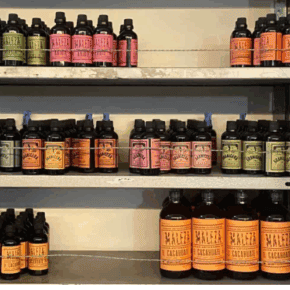
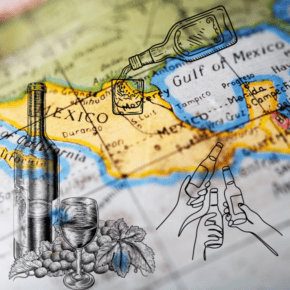
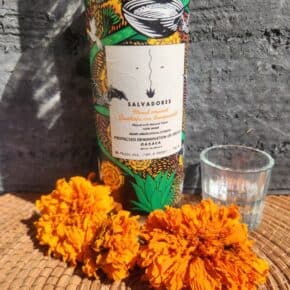
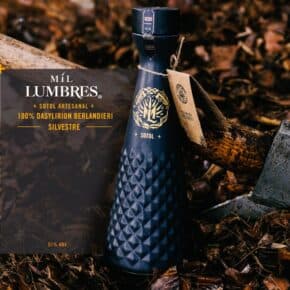
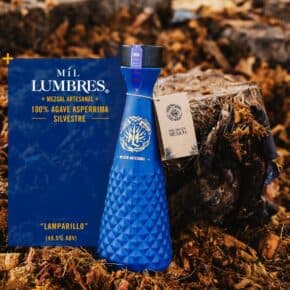





Awesome research and writing in so many ways. Especially interesting to someone who gave up alcohol and my own “field testing” of the lesser palatable offerings in Mexico half a century ago. Tesguino was arguably the worst, which I described as “grass clippings mixed with spoiled creamed corn”. Easy to vomit back up (in case if you’re obligated to attend a traditional Raramuri tesguinada.).
Great writing churpa. And incredible detail.
It made me wish I had tasted more of those weird bottles we saw along the roadside in our traveling days.
Who knew they were medicinal? 🙄